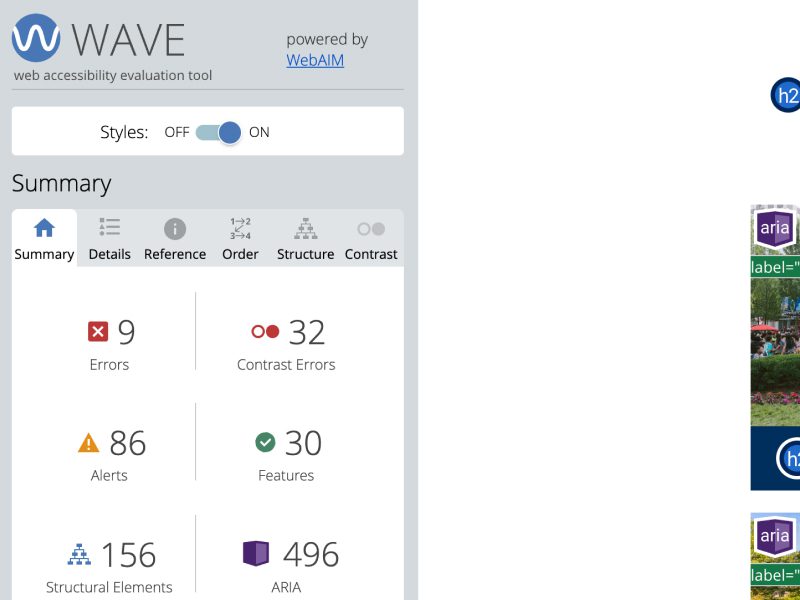Ensuring an equitable internet through accessibility audits
Web accessibility is a critical aspect of digital inclusivity, ensuring that all individuals— regardless of ability—can access, understand, and navigate online content. Creating an accessible website isn’t just about adhering to legal standards (although the Americans with Disabilities Act does provide legal guidelines for accessibility). Instead, it’s about providing equal access to information and services. However, numerous websites face significant accessibility challenges, all of which can limit the experiences of users with disabilities.
Common accessibility concerns that we see on websites are color contrast issues—red text on grey backgrounds, white text on light-colored backgrounds, and other combinations that make content difficult to read for people with visual impairments. We solve this problem by utilizing accessibility tools like WAVE to ensure that there is enough contrast on the page. If there isn’t, we adjust the colors within the parameters of a brand’s color palette.
We have also encountered missing alt text on crucial images, which poses an issue for screen readers. In these cases we evaluate whether an image is decorative or substantive, and add appropriate alt text to describe the image or infographic. This ensures that users with visual impairments can effectively navigate the site.
With the U.S. Department of Justice updating Title II regulations under the ADA to include clear standards for web accessibility, organizations are facing increasing pressure to comply. Failure to meet these standards by the upcoming 2026 and 2027 deadlines could lead to legal challenges, financial penalties, and loss of public trust. At Buckeye Innovation, we work to close those gaps in accessibility in a variety of ways.

To help these clients meet accessibility requirements and create a more inclusive online presence, Buckeye Innovation implements a detailed process for web accessibility audits and remediation.
While we always recommend a full accessibility audit and hard-coded fixes as the best practice, for some clients, budget limitations made AI widgets a more viable short-term solution. We worked with one client who decided to implement a widget to meet WCAG 2.1 AA standards, with the understanding that a more comprehensive audit would follow once additional resources became available.






The impact of our accessibility work is profound, both for our clients and their users. By addressing the most common issues—such as low contrast errors and missing alt text—we helped one client improve the user experience for all visitors, not just those with disabilities.
Furthermore, our clients significantly reduced the risk of legal challenges by addressing accessibility issues long before the ADA compliance deadlines. They were able to avoid the potential financial and reputational consequences associated with non-compliance.
At Buckeye Innovation, our mission is to ensure that organizations don’t just meet regulatory requirements, but provide an equitable, inclusive experience for every visitor. Through comprehensive audits, targeted remediation, and ongoing monitoring, we’re proud to help clients build websites that serve their communities in a truly accessible way.


7775 Walton Parkway, Suite 100
New Albany, Ohio
(614) 289.7900
info@buckeyeinnovation.com